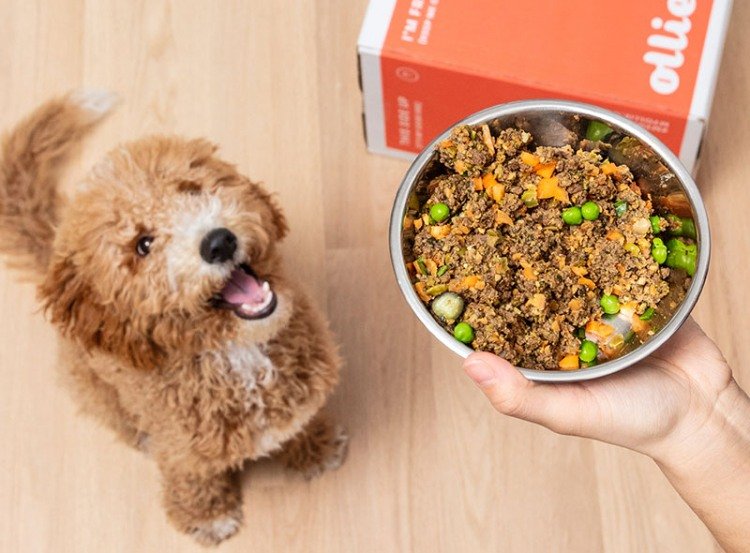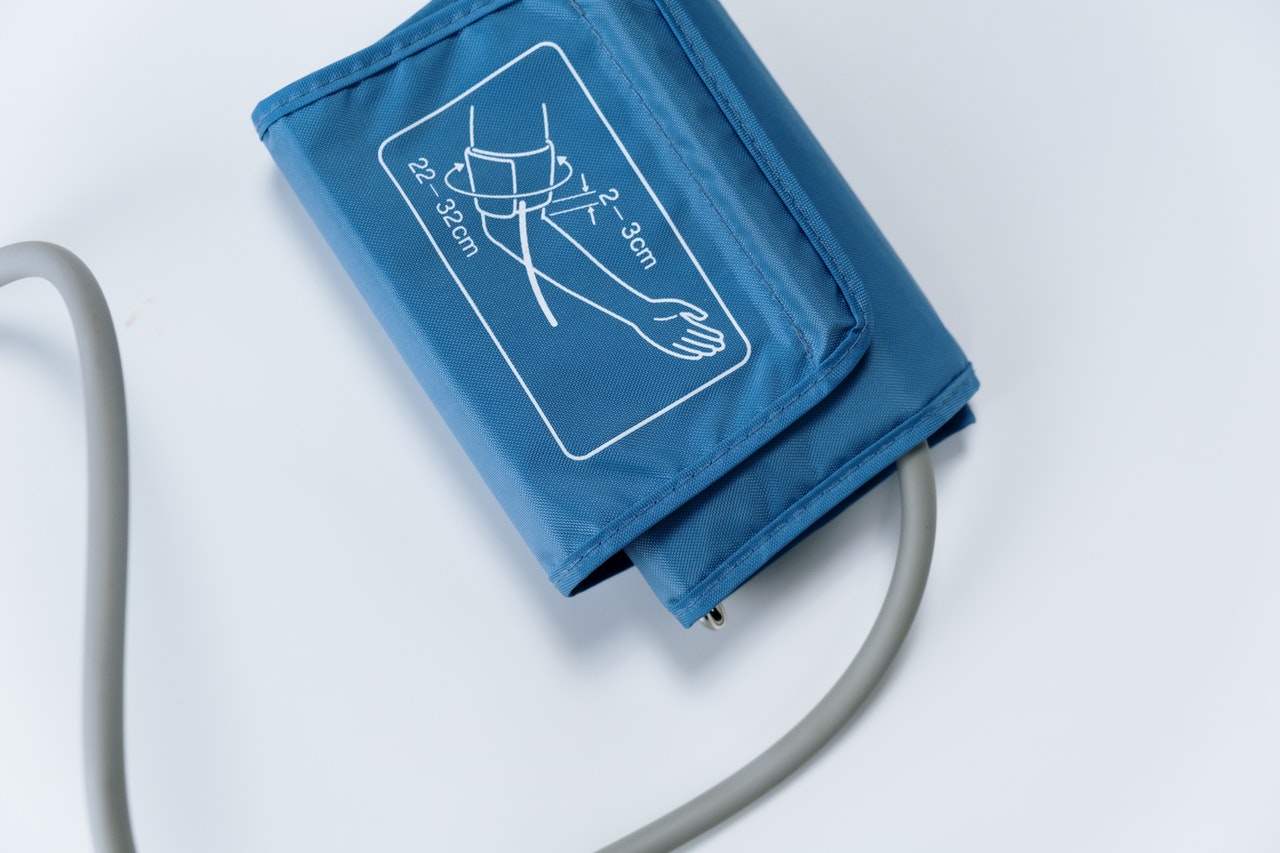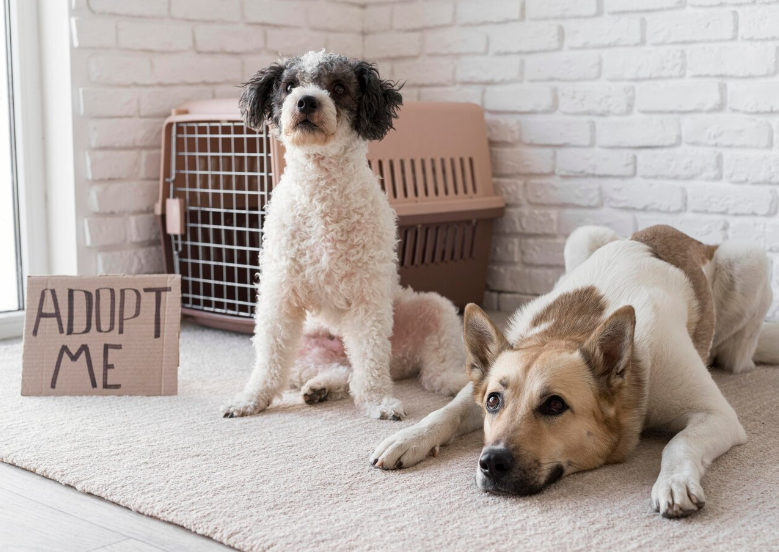
Welcoming a furry friend into your home can be one of life's greatest joys! However, as some of us used to say: “Life happens”. Sometimes circumstances can change abruptly, preventing us from being able to properly care for our beloved paw friend…
Financial problems and difficulty covering the costs for our pet’s supplies and vet bills; worsening the owner’s health, followed by their inability to physically care for the dog; family changes such as divorce, the birth of a child, or the death of a family member, etc., are among the common reasons for dog rehoming.
This is not an easy decision, nor it is a simple process! Rehoming your paw partner requires careful consideration, planning, and dedication to ensure that they will find a loving forever home where they will feel safe and happy!
Today’s article is dedicated to the process of rehoming a dog, and aims to help you consider all its aspects, should you decide to go that way.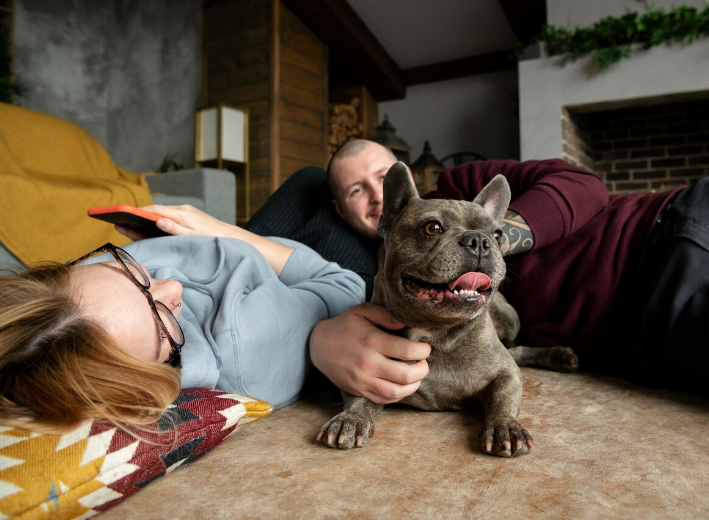
Evaluate the Situation
Can You Find a Solution?
Before starting the process of rehoming your dog, it is essential to thoroughly assess the reasons behind your decision. While circumstances can change unexpectedly and make us face difficult decisions, we should first try to find a solution and not give up on our paw friend easily!
Whether it is due to a job relocation, financial difficulties, health issues, or unexpected changes in family dynamics, assessing the situation thoroughly can help determine the best course of action for both you and your furry buddy.
For example:
-
Are you able to find alternatives to cover the costs of their care, i.e. by switching jobs; finding a second one; or receiving support from your family and friends?
-
Are you able to provide accommodation for your dog and a family member who is allergic to pet dander?
-
Are you able to help dogs/pets in a multi-pet household get accustomed to each other or be placed in separate areas, so that you do not have to rehome any of them?
-
Are you able to find a reliable relative or friend who can take care of the dog, while you are recovering from a therapy/operation/health condition?
-
Are you able to find alternatives such as training and behavior modification, in case behavioral issues might be the reason for rehoming?
These are among the questions you should ask yourself before embarking on the process of rehoming.
Make sure to objectively and honestly assess your ability to provide the necessary time, attention, and resources for your dog's well-being and determine whether rehoming is the most responsible option or not.
Can You Meet Your Dog’s Specific Needs?
You should also consider your canine’s specific needs and whether you can properly meet them in your current environment or not.
Is your paw companion receiving enough attention, exercise, mental stimulation, and socialization? Do they have any behavioral issues that require professional intervention or specialized training?
Assessing these factors will help you determine whether rehoming is a necessary step to ensure your dog's happiness and quality of life.
Emotional Impact
It is also essential to consider the emotional impact of rehoming on yourself/your family and your dog.
Saying goodbye to a beloved pet can be more emotionally challenging than you have ever imagined! Both you and your furry friend will need to adapt to the changes while coping with sadness. It is important to take the time needed to process your emotions and discuss the situation with family members and friends or even a professional if needed!
If you're struggling to make the decision to rehome your dog, consider reaching out to your close ones, or animal welfare professionals for guidance and support. They can offer valuable insights into the issue and help you explore alternative solutions that may allow you to keep your dog while addressing the problems you are currently facing.
Consider All Factors
Sometimes, we tend to reflect on a problem one-sidedly only. Analyzing one aspect of the situation without considering all the accompanying factors, could make us overlook possible solutions.
By carefully evaluating all factors involved and seeking support when needed, you can make an informed decision that prioritizes your dog's well-being.
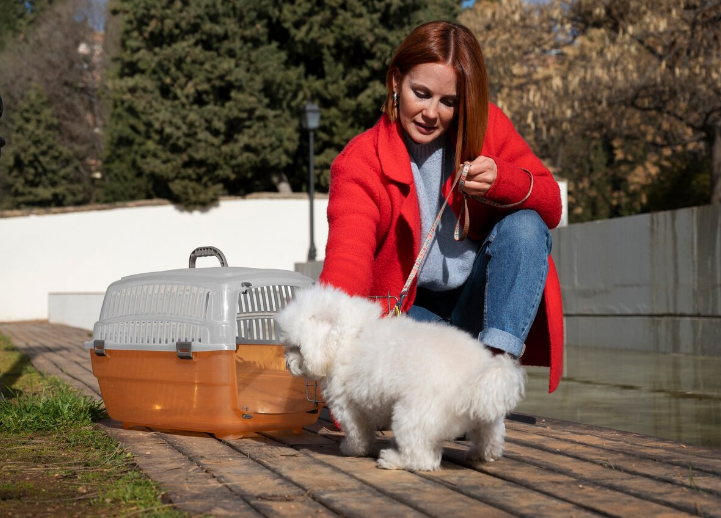
Preparing Your Dog for Rehoming
Physical Preparation
Preparing your dog for rehoming involves ensuring they are in good health, up-to-date with all the necessary vaccinations, and parasite control. Discuss any medical concerns or ongoing treatments with the new owner to ensure they are familiar with the dog’s health and specific needs.
Additionally, you may want to provide the new owner with a supply of your dog's current food and feeding schedule to minimize any abrupt changes in their diet and prevent digestive issues.
Schedule a visit to the veterinarian for a thorough health check-up and obtain copies of your paw friend’s medical records. These should be provided to the new owner.
Additionally, invest time in grooming / take your dog to grooming to ensure they look and feel as perfect as possible for potential adopters.
Behavioral Preparation
Preparation for rehoming encompasses more than just ensuring your dog is physically healthy. It also requires behavioral preparation to help them transition smoothly to their new home.
Having said that, you should assess your dog’s behavior and address any issues that may make them less adoptable. Keep in mind that the presence of some serious behavioral issues could be a deal-breaker for potential adopters.
If this is the case, you should invest time in training sessions to work on basic obedience commands, leash manners, and socialization skills. The assistance of a professional trainer or enrolling in a training program may be helpful in such situations.
Emotional Preparation
Emotionally preparing your dog (and yourself) for the transition is probably one of the most difficult aspects of the rehoming process.
It is crucial to familiarize your canine with new environments to help ensure a smoother transition to their new home. Introduce them to new surroundings gradually to allow them to adjust more easily to their new home later.
You can start by taking them on outings to parks, pet-friendly stores, and other public places and expose them to different stimuli, such as other animals, people, sights, sounds, and smells.
This can help reduce anxiety and fearfulness when transitioning to their new forever home.
Another important thing to do to emotionally prepare your furry friend for the transition is to set up a comfortable and safe area for them in your home where they can relax and feel secure. Place a cozy bed, toys, and familiar objects that carry their scent to help them feel more at ease during the transition period. If possible, gradually acclimate your dog to spending time in a crate or a designated area, as this may be necessary in their new home.
Dogs thrive on habit and may develop anxiety due to sudden changes in their daily routines. Therefore, by keeping their route consistent, you are helping your furry buddy feel secure!
Canines are very sensitive and empathetic creatures who can experience stress and anxiety during transitions. Having said that, it is essential to provide them with your unconditional love, and help them feel safe and secure during this challenging time for them! Positive reinforcement is particularly useful in such cases!
Documentation Preparation
Gather all necessary documentation, including your pup’s vaccination records, medical history, microchip information, and any registration or licensing paperwork. Provide copies of these documents to the new owner, along with your contact information and any additional instructions or recommendations they may need to properly care for your dog.
By taking these additional steps to prepare your dog for rehoming, you can help ensure a smoother transition and increase the likelihood of finding them a loving forever home!
Create an Adoption Profile
Creating a comprehensive profile of your paw friend is crucial for attracting potential adopters! It serves as the first impression potential adopters will have of your dog and can greatly influence their decision to inquire further!
Include Detailed Information About Your Dog
We would recommend that you add as detailed information about your paw companion as possible, including their breed, age, personality traits, likes, and dislikes, strengths, and weaknesses. Provide a detailed description of your canine’s personality, and temperament, and don’t forget to also mention their unique quirks! This might be a milestone of their adoption!
Does your dog love meeting new people, playing fetch for hours, or snuggling on the couch? Potential adopters need comprehensive information to make sure your dog would fit their lifestyle and become a good fit for the family!
It is also recommended that you highlight any special needs or requirements they may have to help interested adopters make informed decisions.
Including high-quality photos of your dog, emphasizing their unique features, can significantly increase their chances of finding a suitable home.
Clarify Your Dog’s Tolerance Towards Other Pets and Children
An essential aspect of creating a good adoption profile for your furry friend is clarifying their tolerance and compatibility with other pets or children. This is particularly important for families with children or pets that consider adopting a furry friend.
If your canine prefers to be the only pet in the household, and/or has specific requirements for their living environment, you should communicate these preferences and needs clearly. Also, if your dog is still young they may be able to adapt to the presence of another animal or child quickly; however, if your canine is already an adult/elderly, they may have a difficult time getting accustomed to another pet or child.
Provide Medical and Behavioral History
Be transparent about your paw friend’s medical and behavioral history! Disclose any past or current medical conditions, allergies, or dietary restrictions your dog may have, as well as any ongoing medications or treatments.
If your dog has undergone training or behavior modification, share details about their progress and any recommended training techniques/methods that may help them integrate into their new home more quickly.
Find the Right Match
When searching for a new home for your dog, prioritize their well-being above all else. Evaluate potential adopters carefully to ensure they are committed to providing a loving and stable environment for your furry buddy.
Conduct Thorough Interviews
Conduct thorough interviews to assess the potential new owner's ability to meet your dog's needs. Look for signs of genuine interest, responsibility, and compatibility with your dog's temperament and energy level.
Sometimes owners overlook some aspects of the dog’s temperament, especially their energy levels, which may become a serious issue in the future. High-energy dog breeds require a lot of attention, physical and mental stimulation, and adequate exercise suited to their needs.
In case your dog belongs to a highly energetic dog breed, make sure that their future owners will be able to meet their specific needs for physical and mental stimulation.
When screening potential adopters, ask thoughtful questions to gain insight into their lifestyle, values, and expectations as pet owners. Inquire about their experience with dogs, their daily routine, and how they plan to incorporate your dog into their lives. While it is important to ask the right questions, it is also essential to listen attentively to their responses!
Evaluate Living Conditions
Visit the potential adopter's home to assess their lifestyle, and living conditions and make sure they can provide a safe, comfortable, and suitable environment for your dog. For example, you should look for signs of cleanliness, adequate space, and secure fencing or containment areas. Consider whether the home environment aligns with your dog's needs and preferences, such as access to outdoor space for exercise or proximity to dog parks.
Observe Interactions During Meet-and-Greet Sessions
It is essential to pay attention to how potential adopters interact with your dog during their planned meeting sessions. Are they affectionate, respectful, and understanding of your dog, or are they rather the opposite? Are they offering them treats and using positive reinforcement, or do they seem to prefer negative stimuli as behavioral management tools?
Open Communication
Encourage open and honest communication with potential adopters throughout the adoption process.
Motivate them to ask questions, express concerns, and seek clarification about your dog's needs, behaviors, and preferences. Building a foundation of trust and collaboration with potential adopters is essential for ensuring a successful and harmonious adoption experience.
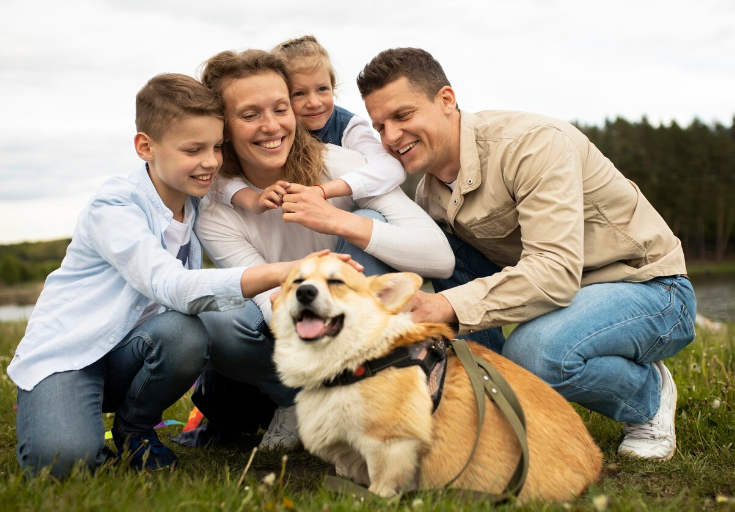
Transitioning to a New Home
Provide Essential Supplies and Familiar Items
Once you find a suitable adopter, ensure a smooth transition for your dog to their new home by providing essential supplies such as food, bedding, toys, and any medication they may need. Bringing familiar items from your home will help your paw friend feel more comfortable in their new surroundings. Familiar scents and objects can bring a sense of security and reassurance during the transition period.
You can even prepare a transition plan featuring your dog's daily routine, dietary preferences, training cues, and medical history to help the new owner acclimate them to their new home.
Gradual Introduction
Introduce the dog to their new home gradually, starting with one room or area at a time. Allow them to explore at their own pace, using positive reinforcement such as delicious treats to help them feel comfortable and confident.
Supervise their interactions with any existing pets or family members to ensure they are positive and respectful.
Monitor Your Dog’s Behavior
Pay close attention to your dog's behavior and body language during the transition period, as they may exhibit signs of stress, and anxiety. If your paw friend exhibits symptoms such as pacing, whining, excessive barking, loss of appetite, or changes in their sleep and behavioral pattern, they may be stressed and anxious! If you notice any concerning behaviors, address them promptly. This could mean sticking to a routine and making the transition more gradual; giving your dog all your love and care to make them feel safe and loved; arranging meeting sessions with the new owner to help your paw friend get used to their presence; consulting with a veterinarian or behaviorist if needed.
Offer Ongoing Support
It is important to assure potential adopters that you are committed to supporting them throughout the adoption process and beyond! Provide contact information for follow-up questions or concerns and offer to connect them with resources such as training tips, recommended veterinarians, and any pet-related services.
By demonstrating your ongoing commitment to your dog's well-being, you can help make the adoption process easier for all involved parties!
Stay Connected
This is one of the most important aspects of the process! Maintain open communication with the new owners and offer your support and guidance. Make sure to keep track of how your dog’s adjustment process is going.
Building a supportive relationship with the new owners can not only help ensure a smooth transition but also aid in a successful long-term adoption.
Remember that it takes time, patience, and mostly - love, for your paw friend to adjust to their new environment and become a confident and happy member of their new forever family!




